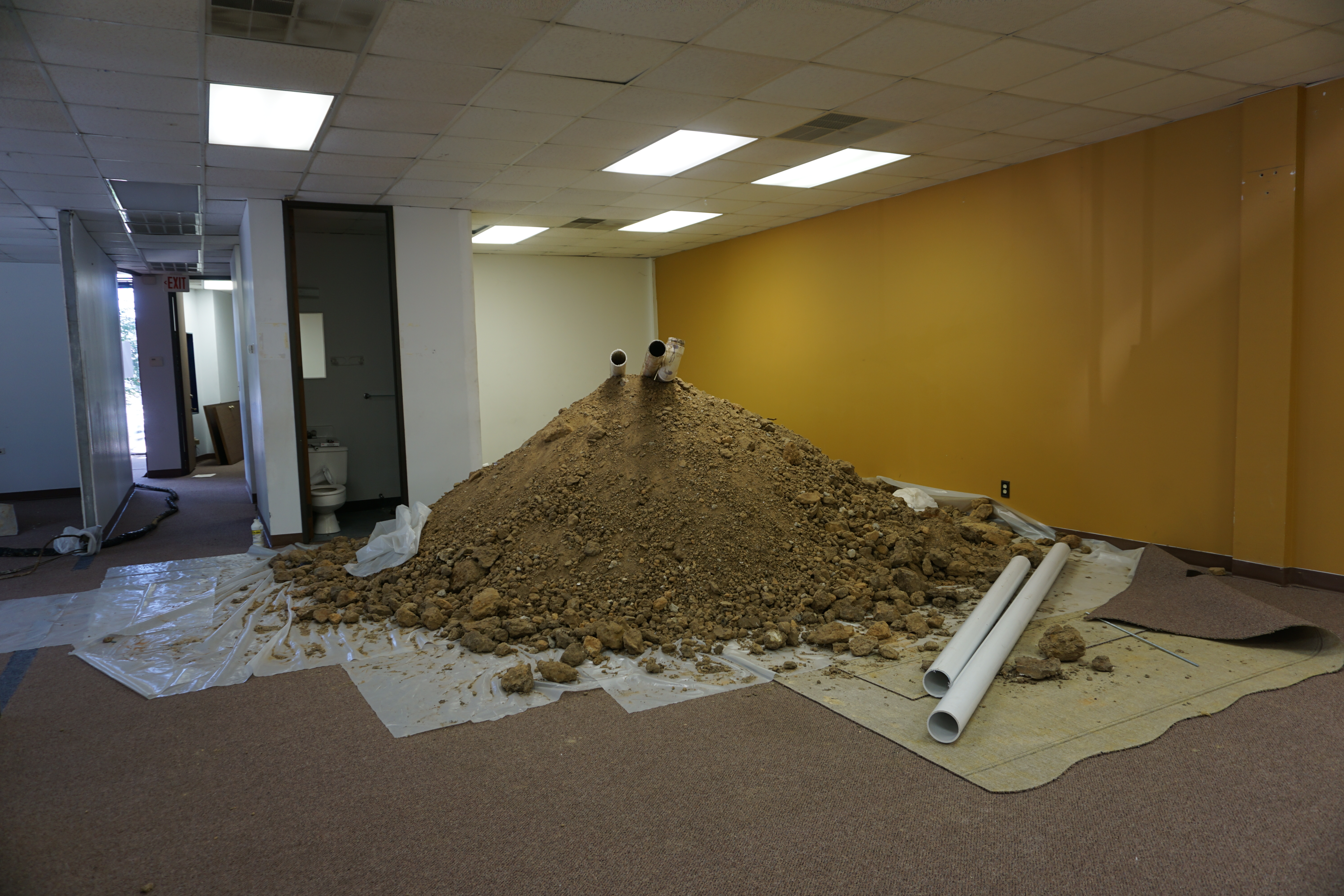Under Slab Plumbing Repair
Leaks can cause major damage to your home and yard, especially slab leaks. Learn more about slab leaks and how to perform a slab plumbing repair. A slab leak occurs when a pipe running below the concrete foundation of your house breaks, causing water to leak and potentially damaging the foundation and home. Slab leaks can be very costly, so it is important to recognize the signs of a potential slab leak. Slab leaks can occur in either water or sewer lines.
Schedule a Free Evaluation
What You Need To Know About Under Slab Plumbing Repair
What causes slab leaks?
If the clay soils constantly shift, the pressure causes the concrete to shift and eventually crack. Below are the main causes of slab leaks:
- Clay expansion when wet
- Clay shrinkage when dry
- A major ground shift (such as an earthquake)
- Faulty wrapping in pipes
- A nicked line during installation or construction
- Electrolysis (the process in which copper in the your pipes interacts with minerals in the soil)
How to detect a slab leak
The sooner you can detect a slab leak, the less home damage you’ll have to deal with. Below are a few signs that indicate you have a potential slab leak:
- You hear running water when the water is turned off
- There is mildew or mold under your carpets
- You have an abnormally high water bill (a pin hole in the water line can leak over 8,000 gallons in one month)
- Your home smells damp and wet
- A hot spot in the floor could indicate a break in the hot water line
- You see foundation cracks, settlements, and sinkholes
Why fix a slab leak?
If you see any of the above signs in your home,
contact a leak detection specialist immediately. Leaking water can lead to mold infestation which can cause respiratory health problems and can be especially harmful to older adults and young children.
Additionally, slab leaks can affect the supporting structures of the home. If a slab leak is not fixed, permanent damage can occur, and the home will start deteriorating.
What’s next?
A thorough repair plan should be made in direct correlation with the plumbing leak testing report.
If the piping under your foundation is comprised of cast-iron, it’s likely time to replace your sanitary system with PVC. If the cast-iron system is not replaced, there is a likelihood that the leak or will continue to get worse. Common methods to repair under slab are tunneling under the foundation and breaking through the concrete slab.
Tunneling Under The Slab
Depending on the area of the leak, tunneling may be a cheaper option. If the area where a leak exists is near the perimeter of the foundation, it may be easiest to tunnel under the grade beam for quick access.
The main reason tunneling is utilized for access is to replace entire cast-iron under slab plumbing systems when other methods of access are not an option.
Repairing or replacing under slab sanitary piping by tunneling starts by excavating an access hole near the perimeter of the foundation. After digging the access hole below the bottom of the perimeter concrete grade beam, the excavation then turns horizontal and proceeds under the foundation.
The path and size of the tunnel is configured to allow plumbers to enter and replace the sanitary piping, either leaving it in the original location or rerouting it out from under the footprint of the residence and trenching a new line to connect to the city sewer or building sewer.
The original sanitary piping is cut several inches beneath the bottom of the concrete slab and the new sanitary piping is connected using heavy duty couplers. The new piping must then be hung from the slab to prevent future displacement. After the new piping is installed and properly supported, a hydrostatic test is performed to insure that all of the leaks have been repaired. Finally, the tunnel is ready to be backfilled.
What is backfilling?
Backfilling the tunnel must be done in such a way that it prevents damaging the new piping. In addition to that, backfilling of the tunnel should be done in a way that limits the potential for causing future cracks in the foundation. Backfilling consists of putting back the same soil excavated from beneath the foundation and from within the access hole, and hauling off the soil that’s excavated and not utilized.
Breaking through the slab
Breaking through concrete slabs to modify, repair or replace sanitary piping is a substitute for tunneling in order to save in repair cost. If the flooring will need to be replaced no matter what, it’s a great time to
get your foundation fixed. And lucky for you, we do that too!
Repairing or replacing under slab sanitary piping is done by removing the concrete, accurately locating the piping and the leaks, fixing the piping and leaks, and replacing the concrete and flooring.
If possible, carpeting or other flooring is removed for later re-installation and attempts are made to control the messy construction activities. A 3X3 hole is made through the foundation for access to the leak. After the plumbing repairs are completed, a hydro test is performed before covering the work and patching the slab.


